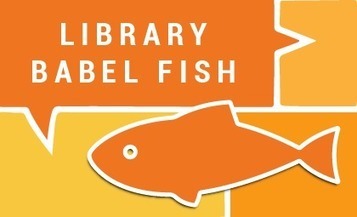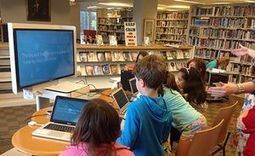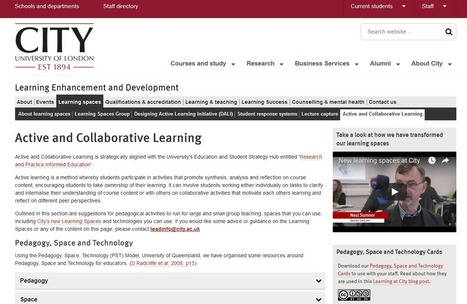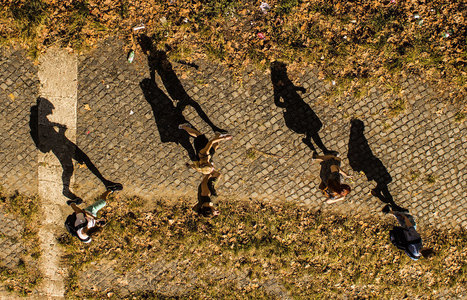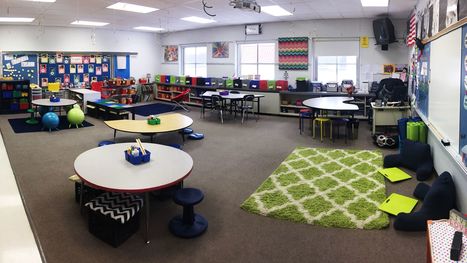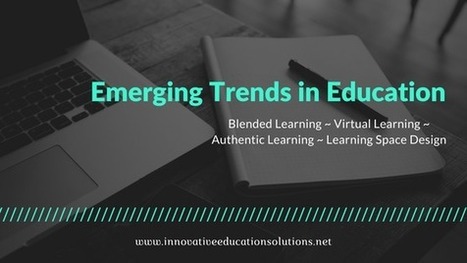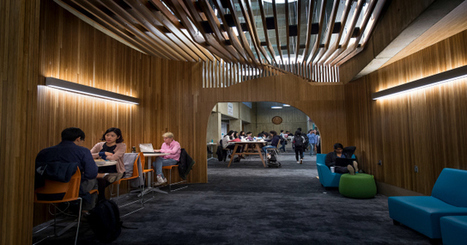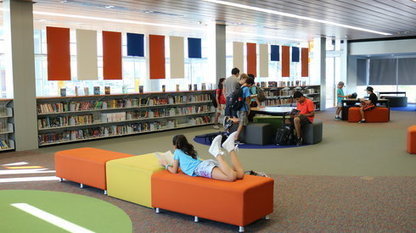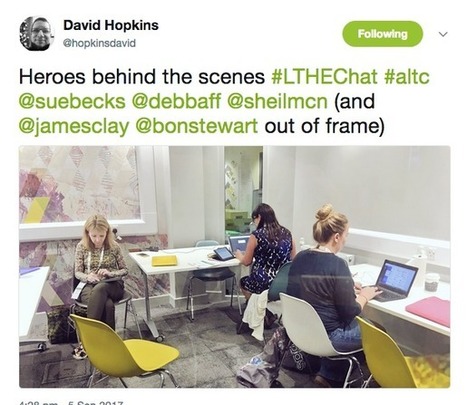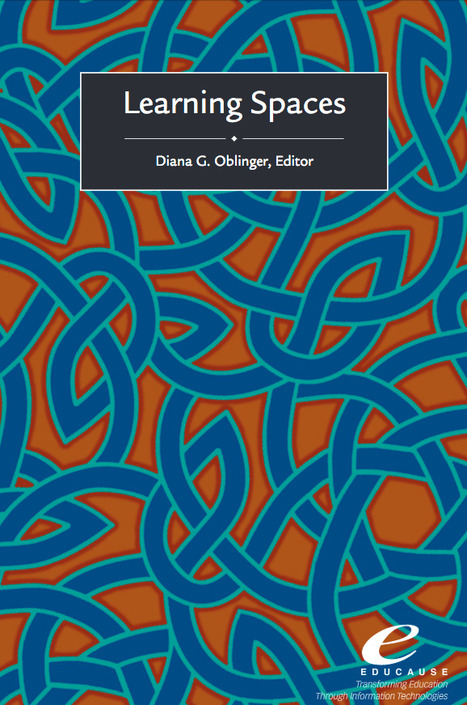 Your new post is loading...
 Your new post is loading...
If you want to get my goat, or, I daresay, the goat of any librarian, make a gratuitous reference to shushing. The finger held to the lips, the aggressive whisper, the frown at a pin’s drop. We don’t do these things, but it’s a stereotype that is endlessly used in article titles and commercials, and it’s annoying. Still, something struck me as I was recently mulling over what it is that libraries offer in our frazzled, commercialized, surveillant society. I’ve made the claim before that library values, if not actual library practices, could be beneficially applied to the digital platforms we use every day. Caring about privacy, intellectual freedom, the public good and free access to information for all would go a long way toward making our tech corporations more just and socially responsible. We may be making a little progress on that front.
A new Project Information Literacy report by the ever-curious researcher, Alison Head, has just been published, the first in a new “practitioner’s series.” Planning and Designing Academic Library Learning Spaces involved interviewing 49 librarians, architects, and consultants involved in 22 library construction projects that were completed between 2011 and 2016. The research probes how these three parties negotiate their values and incorporate them into designs, what kinds of learning are these new and renovated spaces meant to support, and what best practices (and worst practices) might inform libraries embarking on a renovation..
The session reports on two studies based around Jisc’s investigation into the Next Generation of Digital Learning Environments. The first study asked questions about the technology in use, and emergent technologies that impact on learning and teaching. This involved framing the question as a “what if” and a “what would” around next generation digital learning technologies. This methodology relied on passive recruitment, with participants contributing a range of submissions from as short as a tweet to extensive papers.
The second report is based on data elicited from interviews with teaching staff about their practice. The methodology was to recruit teaching staff and use the same set of questions to interview each. Example questions include Tell me about the teaching you do. Where do you teach? How do you learn about teaching? Who do you talk to/communicate with about teaching? What is the balance of teaching with the rest of the work you do? What do you wish you could do around teaching? What are you not getting to do that you would like to be able to do?
I find it a bit ironic that I’m talking in a session called ‘Learning Centers’ when I, well hate is a strong word, but I really have some big issues about the term ‘learning center’ used in library context. To me libraries are very much about learning and about people meeting, collaboration and talking. The library is also about collections for sure but a collection in itself is not the goal, the goal is to support learning, education and research and libraries are great at that so let’s just call it a library.
"Why are they coming?" a new colleague asked me earnestly. She was wondering why students are coming to visit our university library in the digital age. If we understood the answer to this question, could we prepare more wisely for the future of the IT and library professions? Indeed, there is reason to be curious. At the University of Miami Libraries, for instance, the number of people entering our largest library, Otto G. Richter Library, has risen approximately 20 percent since 2015. During peak periods, such as final exams, the number of students entering often exceeds seating capacity. Our students advise incoming peers that the best place to study is the library, and they are acting on these recommendations by visiting in person and staying for many hours at a time.1 But the students who visit our library are not entirely satisfied with what they are finding. When asked what needs to be improved, students request more seats, more power outlets, and longer hours. These requests might be understood not just literally but also philosophically: students seem to want a library that is more capacious, connected, and open.
In 2017, archaeologists discovered the ruins of the oldest public library in Cologne, Germany. The building may have housed up to 20,000 scrolls, and dates back to the Roman era in the second century. When literacy was restricted to a tiny elite, this library was open to the public. Located in the centre of the city in the marketplace, it sat at the heart of public life.
Libraries become a different kind of learning destination when schools reimagine them as open, transparent spaces that invite student communication and collaboration.
In the recent past, there has been a tremendous rise in the number of people living the digital nomad lifestyle. As a result, co-working has become a draw for many budding entrepreneurs, freelancers, and remote employees. This new style of workspace gives individuals, startups, small businesses, and the like the opportunity to have an office environment without high overhead or a long-term lease. Often these spaces are filled with like-minded individuals who can capitalize on the networking and collaboration opportunities that can be had as a "resident" of such a space.
This blog post is personal short reflection of the work in the Learning Spaces theme at City, University of London over the past three years, where I have been an Educational Technologist. I entered the department which was bigger on the inside than the outside. Many adventures were had.
Part of a technology coach’s role these days is to convince teachers that their job description has changed. The industrial model of education is well past its expiration date, and the generation of students born today are going to graduate into a world that will look completely different than our own. In order to train 20th century teachers to reach the conceptual understandings required for 21st century education, school leaders and tech coaches need to focus on describing what this could be.
The ongoing transformation of how learning takes place means that learning providers need to look again at physical delivery spaces – what learners actually do in these spaces (not what we think they do in them). This will, he argues, help to make sure that people can learn optimally and also ensure that the best use is made of available space.
Once again all the #altc keynotes knocked it “out of the park”. Three very different perspectives, approaches and presentations yet all three complemented each other beautifully. From Bon Stewart’s opening around the need to challenge the new norm(al) of ed tech and re-balance the bell curve tradition with more of Haraway’s Cyborg manifesto, to Sian Bayne’s thought provoking take on the need for anonymous spaces to fight back against data capitalism, to Peter Goodyear’s closing talk around the need to re focus the way we think about and enact the design of learning spaces, I got what you want from any conference – insight, challenges, and a fair bit of chin stroking “hmm”.
At its new Waterside Campus the University of Northampton is doing away with lecture theatres in favour of more flexible ‘teaching spaces’.
It’s the latest evidence of the university’s developing approach to using digital technology to enhance teaching and learning. Already, Northampton has redesigned two-thirds of its courses to support its ‘active blended learning’ approach and the new teaching spaces are part of a strategy to give students best value from face-to-face time with teachers.
|
Today, school libraries look quite different than they did when previous generations attended school.
Instead of rows of long tables and shelves filled with dusty books, school libraries now provide flexible and group learning spaces, movable furniture, iPads and computers, learning pods, and more.
Architects are being hired in certain schools to completely re-design and transform libraries to attract students to not only read, but use the space to their own advantage.
By making these facilities visually appealing, as well as comfortable and playful with elements such as reading nooks and beanbags, kids are more engaged and inspired to enjoy reading and learning.
When Cristóbal Cobo and I set out to write the book Aprendizaje Invisible (“Invisible learning”) nearly six years ago, we sought to take a 360° and 3D view of the educational landscape—with an eye toward the future. We found that, yes, technologies provide us with new opportunities, but the gap between formal learning and informal and non-formal modes of learning is becoming increasingly apparent.
Among the more fascinating library revitalization projects we have seen recently, one that stands out is Payson Library at Pepperdine University. As we took a closer look, we realized that much of the thinking that informs the Payson Library renovation is replicable and scalable for other institutions, even institutions with quite small library facilities.
You probably all know the scene: A library reading hall with endless rows of students working, studying, learning. Alone together. A nice view. Makes me happy every time I cross it. But we should never stop question our services and our users behavior (also when it’s a very positive behavior) and I often ask myself: “Why do they come? Why don’t they sit at home and study?”. Some of them for sure because they are gonna pick up a book or need library help or instruction and don’t get me wrong: I love a library filled with working students and I think we do an awesome job giving them good conditions but still, why do they come just to sit and work? I find the question important because it might be a window to both insights on the library and the people using them.
The UK Higher Education Learning Space Toolkit was launched in 2016 to help staff from different professional services share best practice and work more effectively when creating learning spaces.
It is intended as a practical guide and a source of inspiration in the design of spaces that delight and motivate students, as well as meeting their functional needs.
This series of case studies complements the original toolkit and illustrates how a range of different institutions have applied the good practice in their own distinctive ways.
There are plenty of studies that isolate the effects of light, acoustics, or air quality on learning. But the research on flexible classrooms is frustratingly scarce.
There are good reasons for the apparent lack of interest. Variables like natural light and acoustics lend themselves to single-factor experiments that can be conducted in a laboratory setting. Give subjects a task to complete in a room with ample windows, for example, and then administer the same test in a room without them.
I have often heard the adage, “In education, what’s old is new again.” While this is true of some initiatives, I’ve been in education long enough to know these strategies are improved upon as they come around each time. I also know that there are definite emerging trends that are completely new to the world of education for the current generation of students. I’m going to discuss four of the hottest right now, though they definitely have areas of overlap.
In many respects, today’s campus library bears little resemblance to the quiet, book-filled building of years past. But that doesn’t mean libraries — and their custodians of knowledge — are on the margins when it comes to educating students. Many institutions are finding new tools and new strategies to help libraries stay relevant in the digital landscape.
In higher education, 21st-century librarians are seeing a redefinition of their roles, moving from stewards of physical information to educators on digital literacy. Institutions are also taking a new look at library buildings, which are becoming less about offering a refuge for quiet, independent study and more about creating opportunities for creativity and collaboration.
Yesterday Carnegie Mellon University announced a new partnership with technology company Digital Science. CMU’s Keith Webster describes the mutual commitment to research discovery and smarter workflows that underpins this collaboration, and also outlines some of the ways in which academic libraries have changed; from their more dynamic use of space to the redeveloped tools and services made available to students and researchers looking to navigate the vast information landscape.
Steven Yates has a message for would-be school librarians. “If you’re coming to this because you like to read and you want to manage a collection of books, then you showed up about 30 years too late to the profession,” says Yates, a former high school librarian who teaches in the school library media certification program at the University of Alabama.
The school library’s mission—matching resources with those who need them—has not changed, he says. But its role is evolving: With materials increasingly offered online, schools are transforming their libraries into active places for students to work together and get creative, with staff who do much more than manage books.
#Iwill think more about spaces #altc
— Sheila MacNeill (@sheilmcn) 7 September 2017
This was my final thought at this year’s annual #altc conference. What a week it was in Liverpool. The conference co-chairs Helen O’Sullivan and Pete Alston and their committee pulled together a fantastic three days where we it felt we truly did move “beyond islands of innovation” and really did explore the “new norm(al)”. I need a bit more time to fully collate my thoughts from the three amazing keynotes so there will be another post.
Learning Spaces focuses on how learner expectations influence such spaces, the principles and activities that facilitate learning, and the role of technology from the perspective of those who create learning environments: faculty, learning technologists, librarians, and administrators. Information technology has brought unique capabilities to learning spaces, whether stimulating greater interaction through the use of collaborative tools, videoconferencing with international experts, or opening virtual worlds for exploration.
Via Nik Peachey
|



 Your new post is loading...
Your new post is loading...

